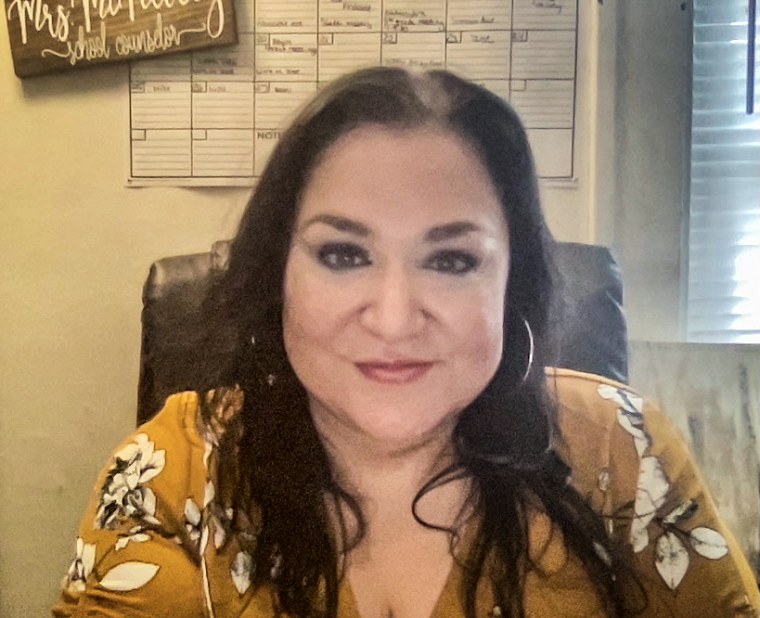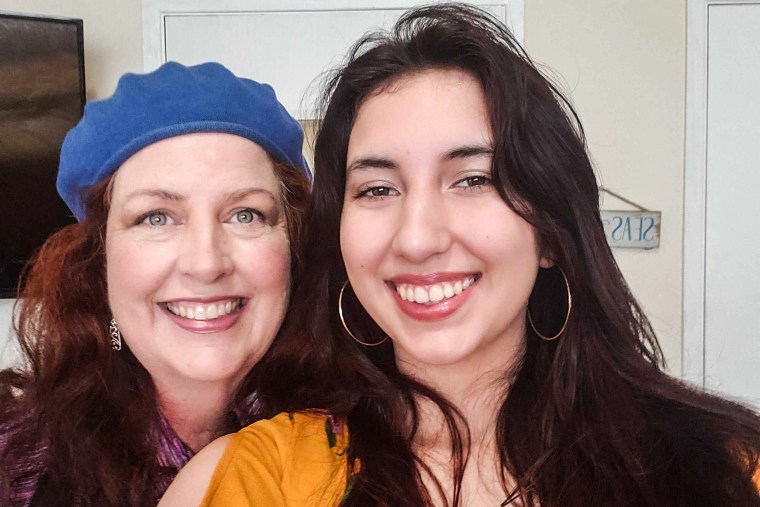For remote learners returning to classrooms, back-to-school brings a host of challenges
From small support groups to a red carpet rollout, schools are taking extra care to reduce anxiety in those coming back to in-person learning for the first time since the pandemic began.
The eighth grader came to school counselor Lydia McNeiley on the second day of school with a request: Was there any way he could be excused from gym class?
For nearly a year and a half, the student, along with about 80 percent of his peers at Charles N. Scott Middle School in Hammond, Indiana, had been learning remotely.
Now back inside the building for the first time since March 2020, he felt overwhelmed. Gym, once a class this young soccer player had enjoyed, seemed noisy — a stark change from the quiet of his home where he had logged onto online classes while grieving the loss of a grandmother and uncle to the coronavirus.
McNeiley, the school’s lead counselor and the eighth grade counselor, had spent her summer thinking about how to ease students back onto school grounds when they returned on Aug. 18. She suggested a different elective for the semester instead of gym: engineering and technology, or perhaps an art class.

“We’re just being proactive, and doing what’s best for students,” McNeiley said, adding that it was evident within the first couple of days that many other students were feeling anxious, too. “I think little by little, things will get better, but it’s going to be a process.”
Across the country, schools are trying to figure out how to best help remote learners reacclimate to physical classrooms.
From tours or virtual tours of the building before school starts to red-carpet rollouts on the first day of school, educators have come up with creative ways to make students feel as comfortable as possible — even as the coronavirus threatens to upend yet another school year.
The schools have their work cut out for them.
NBC News spoke with parents throughout the United States whose children returned to in-person learning for the first time in recent weeks. All said their kids were excited to be back, but the transition weighed on them in different ways, from a high schooler exhausted by her return, to an elementary student who was so thrilled that he couldn’t sit still, prompting an email to his mom from his teacher.
There does not appear to be national data available on the number of children who had been learning remotely since the start of the pandemic and are just now returning to in-person school. But with fewer schools this year offering an online learning option than last year, many students are coming back — some against their will or their parents’, as concerns grow about the highly contagious delta variant.
“We know our students are nervous,” said Tinisha Parker, chair of the board at the American School Counselor Association. “There have been a lot of efforts to build excitement.”
At Gwinnett County public schools in Georgia, where Parker is the executive director of student services, the district tried to make the first day of school as festive as possible. At one school, students were greeted by a band, cheerleaders and a red carpet when they got off the bus.
“They had confetti. They went all out,” Parker said. “Our teachers and our faculty, we missed our kids, too, so it really was a celebration.”
Addressing a problem that predated the pandemic
U.S. schools for years have had inadequate mental health resources and staffing issues. The national average of students to school counselors for the 2019-20 school year, the most recent data available, was 424 students to 1 counselor, far above the 250-to-1 ratio that the American School Counselor Association recommends.
The pandemic highlighted the urgent need to address children’s mental health. Since the pandemic began, an estimated 43,000 children lost a parent to Covid-19. Isolation caused depression in some teenagers. And the proportion of mental health-related emergency department visits spiked in 2020 for young children and adolescents compared to the year before.
Schools around the country are responding. In Oklahoma, where some schools don’t have a single school counselor, the state Department of Education awarded $35.7 million in grants using federal relief funds to 181 school districts to hire more school counselors and mental health professionals.
Starting this fall in New York City, there will be voluntary, confidential school-based screening for all kindergarteners through 12th graders to identify students who are distressed, have gone through trauma or have other mental health needs.
And in Kansas, some districts will be working with community mental health centers to provide services for students on campus during school hours, according to the Associated Press.
At the Indiana school where McNeiley works, she and two other school counselors are offering small support groups to children experiencing anxiety or grief. Quick mental health check-ins are done through an online form twice a week for all students. And the school day starts with mindfulness exercises and breathing techniques, McNeiley said.
“We know our families have trauma, are experiencing trauma.”
It’s particularly important for their student population, who face additional challenges on top of the pandemic, McNeiley said. Nearly 80 percent of the students qualify for free or reduced lunch based on their family’s economic status. Some did their remote classes from a closet because they could not find any other quiet spots in their homes. Others couldn’t log on at all because they had to babysit younger siblings while their parents, essential workers, went to work.
“We know our families have trauma, are experiencing trauma,” McNeiley said. “We are putting the students’ mental health first.”
Elsewhere, students are slowly adjusting to being back in classrooms. Lisa Akin, an artist in Naperville, Illinois, kept her 9-year-old, Brody, home for remote learning last year, fearful he would get exposed to Covid-19. This year, with no remote learning option, Brody returned to school on Aug. 18, telling his mom the day before that he was “really excited” to go back.

That excitement caused him to struggle with classroom rules. At the end of the first day, his teacher sent a kindly worded email to Akin letting her know Brody had had a hard time sitting in his seat and staying quiet in class.
“He was just a little exuberant about being there,” Akin said. “He hasn’t sat still for 18 months.”
She added that she hoped schools would consider incorporating breaks to help students readjust to sitting in a classroom for hours at a time, and perhaps allow children to have fidget spinners or something else to channel their energy as they listen to their teachers.
In Hacienda Heights, California, Evette Kelley-Victoria’s 17-year-old daughter, Anne Kelley Johnson, an honors student, was also excited to go back to school. She had chosen a new backpack for her senior year and woke up early on her first day, Aug. 4, to put on her outfit and makeup.

Being back at school went well — Anne was happy to see her friends — but by the second week, fatigue from the adjustment caught up to her. She opted to stay home for a couple of days, Kelley-Victoria said.
“This all has taken a toll on her,” she said.
In Omaha, Nebraska, Cindy Maxwell-Ostdiek’s three children, ages 12,13 and 15, returned to school on Aug. 11 and are loving being back with their classmates and teachers. But masks are optional in their school district, and while they wear them, they are in the minority. Everyone in the family is happy the kids are back in school and back doing extracurricular activities, but they constantly worry their classrooms could get shut down again if anyone tests positive for the coronavirus.

“We are crossing our fingers,” Maxwell-Ostdiek said.
Back at Scott Middle School in Indiana, the eighth grader who had asked not to go to gym has started settling into in-person learning. Instead of gym, he is doing engineering and technology, which he likes.
He and some other students mentioned to McNeiley that lunchtime is another source of unease; as a result, the school is now staggering lunch periods so students eat in smaller groups, making the cafeteria less crowded. McNeiley is continuing to look for other ways to help her students reacclimate.
“It’s not perfect,” she said, “but we have been tackling one thing at a time, one day at a time.”
Source: https://www.nbcnews.com/news/us-news/remote-learners-returning-classrooms-back-school-brings-host-challenges-n1277822





